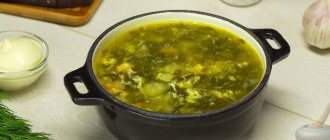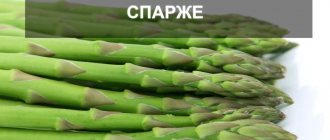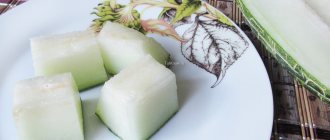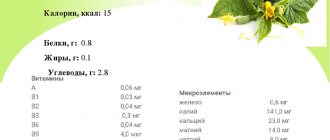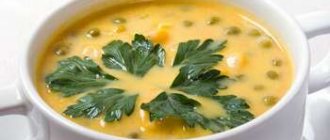Plum is a fruit that has the ability to quickly saturate the human body and nourish it with vitamins and minerals. Plum is required for regular consumption during the period of weight loss or drying - most athletes give their preference to this fruit. Today, more than 30 types of plums are known, each of which has its own shape and color - there are yellow, red and blue plums. They all differ in taste - some varieties have more sugar, others less. As a result of the presented difference, the calorie content of plums per 100 grams differs, which will be discussed in more detail below.
How many calories are in plums?
Plum calories are not able to accumulate in the body, and due to this indicator they do not affect weight gain. This product is good to use during a diet, as plum supports the body’s performance and prevents its exhaustion. How many calories are in plums? On average, this figure is 40 kcal units. The fruit improves the functioning of the cardiac system, has a beneficial effect on the nervous system, and maintains acid-base balance. Constant consumption of plums will help strengthen the immune system as much as possible, and thus a person will protect himself from many diseases.
Plums can be consumed both fresh and dried, and their beneficial properties do not decrease.
For diabetes
For people with diabetes, energy value is not so important, since their test indicator is the glycemic index. Patients with diabetes are allowed to eat all foods that contain a reduced glycemic index of 49 or less.
The following values are presented in the drain:
- fresh – 22 units,
- prunes - contain the most sugar, so the glycemic index is high - 30 units,
- plum puree – 24 units.
If you have diabetes, you are allowed to eat plums, but in small quantities - no more than 250 g per day.
Calorie content of red plum
How many calories are in red plum? Compared to other varieties, red is lower in calories. The bottom line is that red varieties have a slightly larger seed, and, accordingly, slightly less juicy mass. But it is worth paying attention to the fact that ripe plums of this variety have a pronounced sour taste of the skin of the fruit. This factor is explained by the fact that it contains less fruit sugar. So, the calorie content of red plum is about 46-49 kcal. It is ideal for people who strictly adhere to a diet.
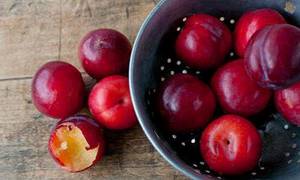
When to expect an effect
A 2-day plum mono-diet will allow you to lose 0.5-1 kg per day, but you should not stick to it for more than 2 days, due to the danger of disrupting the functioning of the digestive tract. The 7-day diet is more balanced and makes it possible to get rid of 4-5 kg in a week.

The greatest weight loss is usually observed in the first days as the body actively begins to get rid of accumulated waste, toxins and excess water. Further, the effectiveness of weight loss gradually decreases. It is best to buy fresh blue plums by weight. Sealed packaging will not allow you to visually assess the condition of the product.
A ripe fruit has:
- uniform dark color with shine and a slight white coating, characteristic of fruits recently picked from the tree;
- smooth surface without dents or cracks;
- a pleasant aroma that can be felt through the skin (without the aftertaste of alcoholic notes);
- cinnamon, dry stalk;
- dense, elastic shape (not very soft and not very hard).
When choosing a low-calorie product, you can ask the seller the lifespan of the tree, since the most delicious fruits grow on plums? growing for more than 3 years.
Another variety
How many calories are in black plums? This is a common product from which many different dishes are prepared. Black plum is very beneficial for the digestive system, especially when following a diet. It is able to remove toxins from the body, which very often interfere with digestion. The calorie content of black plum is 49 kcal per hundred grams. It is very useful in any form. The berry contains a huge amount of vitamins that can restore the body.
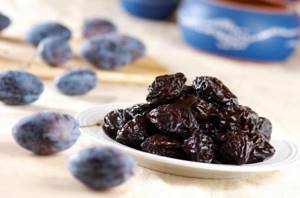
Benefits for the female body
Having considered the BJU of plums, it is necessary to imagine the benefits of the fruit for women.
The following factors are highlighted here:
- the high content of antioxidants is an excellent prevention of breast cancer;
- treatment of constipation - it is necessary to consume plums or prunes during pregnancy or before menstrual periods, when women are worried about constipation and other difficulties with going to the toilet;
- elimination of edema - the female body is more susceptible to the development of edema than the male, and especially during pregnancy, but it is possible to prevent the occurrence of edema.
Also, these fruits help in maintaining youth due to their assistance in cell regeneration.
Video
Fresh berries
How many calories are in fresh plums? They belong to the category of low-calorie foods, but at the same time they are very valuable due to the minerals and vitamins that are so necessary for the human body. Plum helps cleanse the body and helps normalize intestinal function. That is why many nutritionists recommend it. But it is worth noting the fact that in dried fruits the calorie content is twice as high. During drying, the plum loses 85% of its water, but at the same time retains all its vitamins and nutrients.
general information
Plum is a fruit tree widely cultivated in Russia. More than forty varieties of this plant are known. Its fruits are rich in microelements and vitamins. The calorie content of yellow plum allows you to consume it during a diet. In addition, it helps to normalize the functioning of the entire body.

The plum tree reproduces by shoots. It has good fertility. Its flowers perfectly decorate the garden. Plum grows on any loose soil where there is no stagnant water. It is quite easy to care for her. She does not need the gardener's close attention. It is enough to trim the tree in a timely manner. Three years after planting, it should be fertilized with minerals.
Yellow plum calories
How many calories are in yellow plum? We all know that the amount of vitamins and nutrients in fruits directly depends on the conditions in which they are grown. It is important that the area where fruits grow has enough moisture, light and, of course, clean air. This is how you can grow a healthy and useful product. In turn, the calorie content of yellow plums depends on these factors. This variety is slightly larger than the black one. Its skin does not have a pronounced sourness. Yellow plum differs from other varieties not only in appearance, but also in a set of useful properties. It is probably one of the most high-calorie foods, this figure is 49-51 kcal per hundred grams. The plum tastes very sweet. The high calorie content depends on the fact that the seed is small and the proportion of pulp is greater than in other types.

Plum diet
People who suffer from excess weight are recommended to use the plum diet. With its help you can lose up to 3 kg in 3 days. The diet is presented in the form of eating only the presented fruits and water.
An approximate daily diet involves the following meals:
- for breakfast - cottage cheese in the amount of 100 g, 3 plums and a mug of green tea,
- for intermediate use – plums,
- for lunch - a vegetable salad and a cup of the fruit in question,
- for an afternoon snack - plums,
- for dinner - 100 g of boiled meat and plums.
This is the first diet option that involves increasing only 1200 kcal. It is better to choose blackthorn and Kabardinka plums - they do not have much sugar, regardless of the fact that both types are black. The “honey” variety is used for the second option for losing weight - during the day they eat only 1 kg of fruit, distributing it over several meals in equal quantities. Drink up to 2 liters of clean water per day, so there will be no feeling of hunger. The presented fruits are an excellent alternative to all sweet varieties that are prohibited during weight loss. It is enough to follow the recommendations for use in order to lose weight quickly and without harm to health. The plum mono-diet is effective, but is not recommended for use if in the future the person who has lost weight returns to their previous diet - this will provoke weight gain in greater amounts than was lost.
How many calories are in prunes?
How many calories are in plums? Prunes are dried plums that have a number of beneficial properties. It is worth remembering that, unlike ordinary fresh plums, prunes can be several times more nutritious. This is explained simply: an ordinary plum is very juicy, but after drying it loses 85% of its moisture, so only sweet pulp remains. The calorie content of prunes can be 100 kcal per hundred grams, as you can see - twice as much as fresh ones.
For people who are very strict about their weight, it is better to eat only fresh plums. How many calories are in plums? Any variety does not contain more than 60 kcal. And this indicator fully satisfies the norm for a diet. But still, if this is very important, then it is better to pay attention to red and blue. These varieties are easier to purchase, but if you have the opportunity, it is better to grow them yourself. This fruit is very easy to accept and grows quickly; after just a few seasons you can enjoy this wonderful and healthy product.

The use of other varieties is also permitted, since they undoubtedly also have their own value. If you pay attention to the content of vitamins and microelements in different varieties, you will notice that each has its own beneficial properties.
For people who simply want to normalize their intestinal function, an ordinary blue plum is ideal, as it can very quickly solve the problem of the digestive tract. At the same time, the body will receive a large amount of vitamins and minerals, which will have a good effect on the internal state of a person. In particular, plums have a good effect on the cardiovascular system.
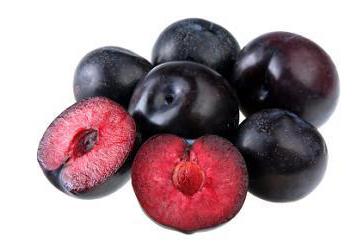
Various varieties of plums are actively used in the preparation of desserts. A very popular delicacy is jam, which will probably be higher in calories compared to dried plums, since the composition will most likely also include sugar. It is probably better not to use it in the diet, but if for other purposes, then it is possible. The jam retains a high proportion of beneficial microelements. If you choose between chocolate or jam, the second will be healthier. Fresh plums are also good to use in the preparation of other desserts, and they will provide not only benefits, but also great taste. Plum is a very healthy and tasty product.
Contraindications
Despite the benefits of plums, they can also cause harm to the body if consumed in unlimited quantities or without following doctor's recommendations.
Video
In this case, the following contraindications are identified for use in large and small quantities:
- Fresh fruits are not recommended to be added to the menu of children under 3 years of age, as they cause fermentation in the intestines, causing abdominal pain, diarrhea and other intestinal disorders;
- Prunes should not be used in the diet of patients with diabetes and people suffering from obesity;
- plum juice also needs to be limited if there are contraindications, as well as for patients with gout - this drink provokes the removal of fluid from the body, which causes dehydration.
Please note: If prune juice has been prepared with added sugar, it should be avoided if you have diabetes. The juice can also cause an allergic reaction, so consuming it if you are predisposed to developing a rash is not recommended.
What is the nutritional value of the fruit?
The composition of BJU plums, that is, the content of proteins, fats and carbohydrates in 100 g of product, varies depending on the variety and method of preparation. Here's a small selection:
- the balance of black plums reflects the following data respectively: 0.83 g (1%) / 0.25 g (0%) / 9.98 g (3%);
- BJU of blue plum looks different: 0.66 g (0%) / 1.1 g (1%) / 7.2 (2%);
- yellow fruits are characterized as follows: 0.81 g (1%) / 0.08 g (0%) / 10.04 g (3%);
- for canned fruits the figures change dramatically: 0.46 g (0%) / 0.32 g (0%) / 12.64 g (4%).
None All options are characterized by a high carbohydrate content with a low calorie content of the product.
[custom_ads_shortcode3] [custom_ads_shortcode1]
Composition and properties
The benefits of fruits for the health of the body are due to the chemical composition of plums; the most significant components are vitamins such as:
- B vitamins;
- tocopherol;
- pantothenic acid;
- retinol;
- riboflavin;
- thiamine;
- ascorbic acid;
- a nicotinic acid;
- pyridoxine;
- vitamin PP;
- folic acid.
Plum is considered a crop with one of the highest levels of various nutrients, which include:
- starch;
- cellulose;
- organic acids;
- ash;
- mono- and disaccharides.
The product contains a significant amount of various macro- and microelements, which include:
- manganese;
- silicon;
- nickel;
- potassium;
- fluorine;
- copper;
- zinc;
- iodine;
- calcium;
- cobalt;
- chlorine;
- chromium;
- molybdenum;
- iron;
- sodium;
- sulfur;
- phosphorus.
The most beneficial properties of plums for the human body include:
- prevention of premature aging of tissues;
- removal of waste, radionuclides and toxins;
- prevention of heart attack, arthritis, cancer, asthma;
- laxative effect;
- fight against chronic intestinal obstruction;
- purification of blood from “bad” cholesterol;
- increasing visual acuity, improving eye health;
- control over the functioning of the heart muscle;
- intensification of metabolism;
- improving memory, accelerating thought processes;
- fight against obesity, help with weight loss;
- preventing the development of skin diseases;
- diuretic effect;
- regulation of the functioning of the digestive system;
- strengthening the immune system;
- prevention of the development of varicose veins, atherosclerosis, thrombophlebitis;
- unblocking of blood vessels, intensification of blood flow;
- reducing the risk of heart attacks;
- control over the male and female hormonal environment.
Plum is especially recommended to combat the following diseases and problems with the body:
- fever, increased body temperature;
- weakened immune system;
- liver dysfunction;
- diseases of the digestive system;
- poor appetite;
- disrupted hormonal levels;
- constipation;
- seasonal vitamin deficiency;
- secretion of a significant amount of bile and associated diseases;
- the presence of waste and toxins in the body;
- heart muscle diseases;
- excess weight;
- inflammation of the oral cavity;
- poor vision;
- swelling of tissues and limbs.
